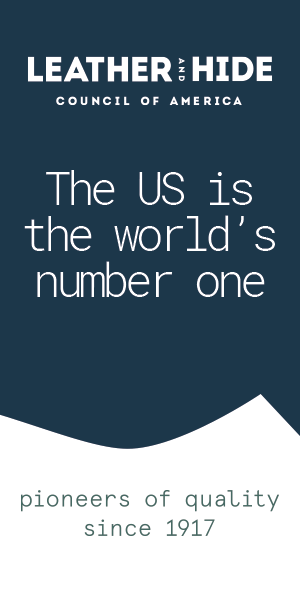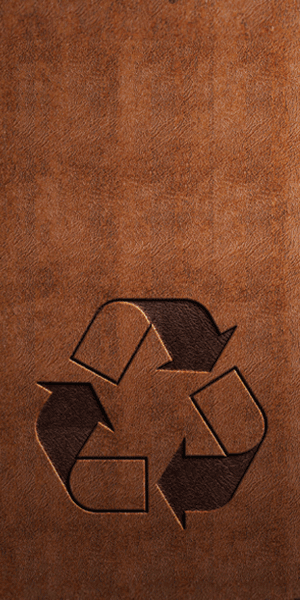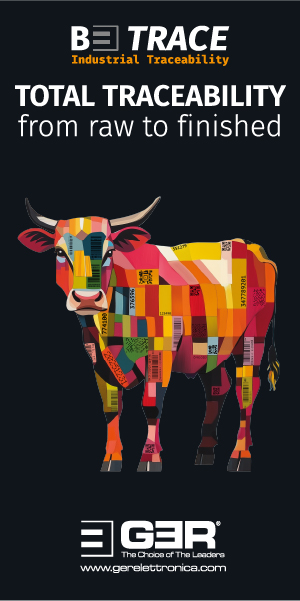Jonathan Muirhead: Leather’s big opportunity in the 2020s

In the first in this new series of interviews with senior figures from tanning companies around the world, honorary president of the Scottish Leather Group, Jonathan Muirhead, speaks of his interpretation of the 2010s, and of his hopes for the global leather industry in the decade ahead.
How would you sum up the decade that has just come to an end in terms of the fortunes of the leather industry, its achievements and the set-backs it has had to face?
This last decade has been the one in which there has been greatest awareness of environmental sustainability. This is something that, I believe, the leather industry has responded to well, certainly in developed countries. The concern is the gap between what is happening in the developed world and what is not happening in the developing world in terms of managing waste, managing processes and managing what we do with our effluent streams. Often, the global criticism of the leather industry is unfairly aimed at what is happening in countries that are less developed and don’t have the means to invest in what is necessary for a clean environment. It’s been a decade of change; there has been much more focus on sustainability. Also, thank goodness, there has been greater awareness of safety and wellbeing for the employees that work in the industry. We’ve seen the introduction of REACH at the beginning of the decade, a European Union initiative focusing, quite rightly, on the safety of chemicals and eliminating some chemicals that the leather industry had used. Looking back, we can say it was a good initiative, removing harmful chemicals, removing any dangerous consequences of handling leather. Not that I think there were many, but I think the public must be reassured now: a product such as leather is as safe and as environmentally sound as any. Tanneries in the developed world have embraced those changes admirably. There is still much to do, but I think the leather industry can hold its head up high.
On the threshold of a new decade, what are your hopes for the leather industry in the 2020s?
My hope is that the leather industry can go further in demonstrating its sustainability credentials. Never have synthetics and plastics been under more pressure or been in the limelight or, to an extent, been as demonised as pollutants. We’re seeing evidence of plastics in the oceans. There is a tremendous opportunity for leather to promote itself as a product that is hugely sustainable, extremely environmentally friendly when compared with other products. We use less water to produce a square-foot or square-metre of leather than is used for materials such as cotton. We’ve seen media coverage that has been critical of the fashion industry’s damaging influence on the environment, particularly its mass procurement of synthetics and cotton and the subsequent disposal of obsolete stock. The leather industry has to get its act together and show the public that it is a material that they can be proud of using and wearing.
In your experience, when major changes occur in the global leather industry, what are the causes or catalysts that bring those changes about?
Often the main catalyst has been government legislation. But in most democracies, legislation is forced on governments through concerns arising from the consumer. It’s public pressure and focus groups that influence government, eventually leading to legislation. The consumer, ultimately, drives government behaviour and the rules and regulations that force industry to make changes.
How can the leather industry achieve the unity and singularity of purpose that it needs to be able to make it clear to the public that there is a connection between leather and the broad desire we see now to have products that make less of an impact on the environment?
No leather manufacturer on their own can hope to change and influence the perception of leather so there has to be a unified approach, either through trade associations or in conjunction with the leather media or other groupings. There has to be a collective effort, right across the board, across nations. I recognise the difficulties because, inevitably, there would be politics involved. We have to view leather as a generic product, which is competing with other materials. The wonderful thing about leather is its adaptability. If one looks at all the technological innovations and fashion trends that have evolved, not only in the last decade but since the beginning of the twentieth century, leather has often featured as an integral part of the design, both for practical reasons and to provide consumer appeal. Leather is still very much the desired material to be found in contemporary super cars, the latest commercial aircraft interiors, state-of-the-art public transport systems, contemporary footwear, travel goods and accessories, covering laptops and mobile phones, and for seating in new building developments such as hotels, restaurants, showrooms, galleries, offices, museums and so on throughout the world.
How confident are you that this can continue?
I think that as long as the leather industry is close to what the consumer wants, close to design trends and following fashion, it will always feature. But there are pressures. There are universities and colleges that are not serving red meat in their canteens and restaurants. That’s really an important issue because it is directly influencing today’s young generation, who will be specifying tomorrow’s products and buying tomorrow’s luxury goods and fashion items. Young people are growing up being advised that they should not eat red meat. This is perhaps more to do with nutrition and environmental issues than animal welfare but the three elements can be confused in people’s minds. I don’t believe that nutritional issues will cause lasting damage to the leather industry, as the prevailing view amongst experts in this field is that human beings should have a balanced diet, which should not exclude red meat consumption. Animal welfare and environmental issues are more serious but there are strong counter-messages that the industry must voice consistently and frequently to bring a much-needed balance to the arguments against cattle-breeding being aired in public. So whilst there may be fewer cattle bred in future, pressures on further improvements to animal welfare should lead to better-quality raw material for the leather industry. Red meat that comes from cattle that is farmed responsibly and sustainably must be marketed in a positive way and, consequently, leather, as a by-product of that industry, can have a positive profile amongst the young and future generations.
Sometimes it seems that the scientific arguments for red meat’s place in a balanced diet and for livestock farming’s place in strategies for lowering the environmental impact of the food industry are not enough and that an emotional argument must go hand in hand with the science. If that applies to leather, too, what can pragmatic people such as tanners do to become better at presenting emotional arguments?
It’s not easy. Probably the only point of communication for many individual tanners is through their customers, who are very often brands. Brands can do much to communicate the emotional values of leather. Tanners have a role to play in putting forward an emotional argument for leather but, again, I think they are restricted in what they can do. It comes back to this unified approach. We’ve got to have a greater meeting of minds between the leather industries in different countries to put forward an emotional case for leather simply because plastics are being demonised. And quite rightly too. There’s a huge opportunity for us if we can get our act together. There’s a very positive message we can put across. It’s all about responsible sourcing, responsible manufacturing, care for the environment, care for the people who work within the industry. All those messages can be put forward very well. There is an issue. There are countries where we know standards are not as high as they are elsewhere and, in a sense, they are letting the side down. I think we have to help them rather than criticise them. Somehow we have to bring in those nations that have fewer resources to help their industries, but also make them understand that they need to invest and improve conditions for their workers and conditions for manufacturing. If we can do that we have a real chance of taking a global, unified approach to promoting leather as the wonderful material that it is.
What are the key insights leather manufacturers need to understand today’s customers well?
I think that’s about understanding consumer behaviour and the changes that are evolving with the new generations that are coming through. We have to be very much more aware of fashion and design trends. To some tanners, those trends may not be obviously relevant, but they are relevant and they will continue to be. Sometimes fashion trends appear to be avant-garde, but an awareness of what is happening out there in terms of product design, fashion and other areas of technological and product change is so important. The leather industry, like any other industry, cannot afford to stand still. We must innovate, not just technologically, but also aesthetically. You can argue that, oh yes, leather is a traditional material, that it’s very natural and we don’t need to change things because leather is leather. Actually, we do need to change. Leather has to adapt. There are all sorts of wonderful technological advances that have been made in tanning and leather finishing. Some of these will be very obvious to the consumer or to the maker of the product so that they can have leather that changes colour when you sit on it or leather than you can digitally print on. There’s a whole host of things we can do to leather to make it more exciting and make it blend in with whatever uses it has. Also, we can do a lot of things that are unseen. These are the technological advances that will help environmental sustainability. Can we tan leather without water? Yes, it should be possible. Can we colour it in such a way that we don’t need dyestuffs? There is fantastic technology out there that I think the leather industry can use. Leather is supremely adaptable and we shouldn’t be frightened of technological change. Leather will always have a part to play and I’m absolutely certain that the consumer wants leather. We have to trade on that and, in particular, ensure that youngsters understand and appreciate leather for the unique, versatile and wonderful material that it is; long-lasting, functional, environmentally sustainable and aesthetically beautiful, featuring natural characteristics that display the origin of its raw material; therefore an ideal fit for contemporary fashion and product design.
The Leather Leaders interviews are also available in audio format, along with a wide variety of World Leather podcasts. Please search for World Leather on Spotify, Google Podcasts, Apple Podcasts or Medium to enjoy them all.






























